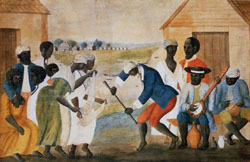2014 (J. Handler & D. Wallman) “Production Activities in the Household Economies of Plantation Slaves: Barbados and Martinique, Mid-1600s to Mid-1800s.” International Journal of Historic Archaeology. 18 June 2014.
Formerly British and French colonies, the eastern Caribbean islands of Barbados and Martinique were major players in the early development of European overseas empires dependent on African slave labor and the large-scale production of sugar. Utilizing documentary and archaeological data we discuss and compare the independent production activities or household economies of plantation slaves on these two islands. The household economy was one of the more prominent aspects of plantation slave life throughout the Caribbean, and in this paper we examine the multiple adaptive production strategies slaves employed to ameliorate the poverty of their material and economic lives.

